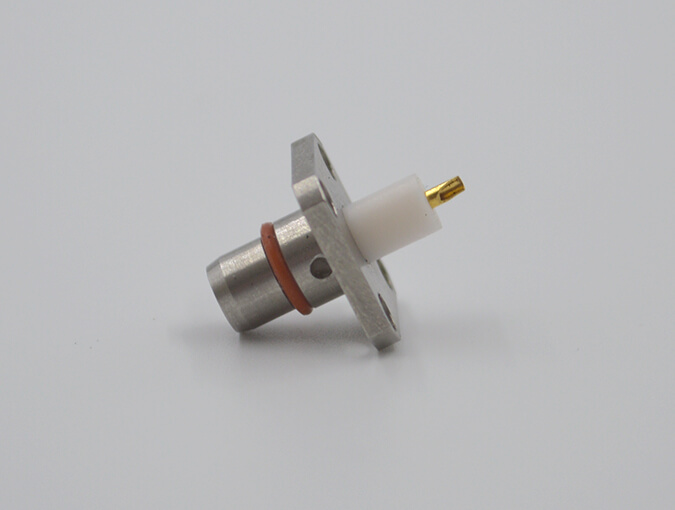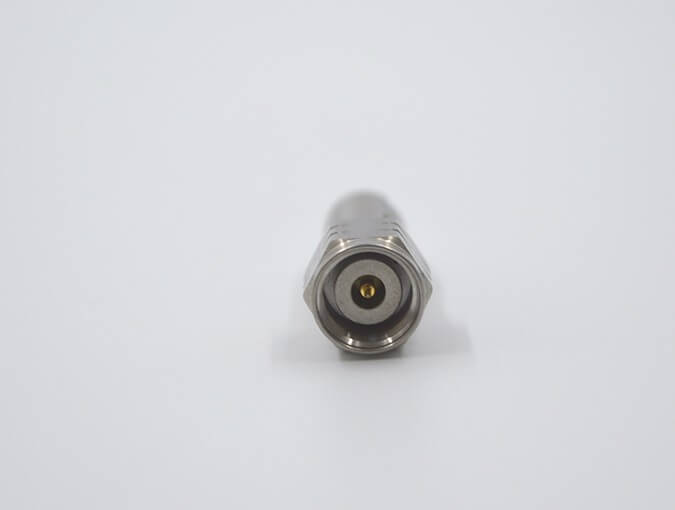2019 Complete Type: Micro RF Coaxial Connectors
 Oct 29, 2019|
Oct 29, 2019| View:859
View:859Nowadays, micro RF coaxial connectors have appeared in various fields, so practitioners in the connector industry should know some types of micro RF coaxial connectors. Next, Xiaotian will select the complete micro RF coaxial connectors type for you.
Coaxial connectors are used to transmit RF signals in a frequency range of up to 18 GHz or higher. The basic structure of coaxial connector for radar, communication, data transmission, and aerospace equipment includes: center conductor (positive) or negative center contact); dielectric material outside the internal conductor or insulator; the outermost layer is external contact, which acts like the shielding layer outside the coaxial cable, that is, the signal is transmitted as the shielding layer or the grounding element of the circuit. Micro RF coaxial connectors can be divided into several types. Here are some of the more common types.
N Connectors

N-type connector, threaded, rotatably locked. It was one of the first connectors used to transmit microwave frequency signals, invented by Paul Neill of Bell Laboratories in the 1940s and named after Neil's initials. The N-connector supports a signal frequency range of 0 to 11 GHz, and the enhanced can reach 18 GHz. There are two types of characteristic impedance: 50 ohms (widely used in mobile communication, wireless data, paging system, etc.) and 75 ohms (mainly used in cable TV system).
BNC connectors
BNC connectors are also one of the common RF connectors. This is a small bayonet connector that can be connected quickly. The full name of BNC is "bayonet nut connector" (snap-on connector, which is vividly described). The shape of the joint, the original meaning of BNC (bayonet Neill councilman) actually comes from the names of two inventors, Paul Neill and Carl councilman. Paul Neill is also the connector of type N inventors. BNC connector is widely used in wireless communication systems, TV, test equipment and other RF electronic equipment. BNC connectors were also used in early computer networks. BNC connectors support a range of characteristic frequencies from 0 to 4 GHz. There are two types of impedance: 50 ohms and 75 ohms.

SMA microwave connectors are a widely used small thread coaxial connector, with frequency bandwidth, excellent performance, high reliability, and long life. SMA microwave connectors are suitable for connection in the RF loop of microwave equipment and the digital communication system. In wireless equipment, RF cable or microstrip line is usually used as the test port of the GPS clock interface and RF module of the base station. The full name of SMA is the subminiature a version, which was invented in the 1960s. Signal frequency supported by SMA microwave connectors. From DC to 18 GHz, some types can support up to 26.5 GHz. The characteristic impedance is 50 ohms.
SMB connector
The full name of SMB is subminiature version B. It is a small push-lock RF coaxial connector with small size, lightweight, convenient use, and excellent electrical performance. Applicable to the high frequency of radio equipment and electronic instruments. Connect the coaxial cable to the loop. The wireless equipment is often used to connect the E1 transmission cable on the base station side, and the DDF small transmission box of the base station is used. The SMB connector was invented in the 1960s and is smaller than the SMA connector. There are two types of characteristic impedances: 50 ohms and 75 ohms with excellent electrical characteristics in the DC to 4 GHz frequency range. SSMB is a mini version of the SMB connector that supports up to 12.4 GHz.
SMC connector
The full name of SMC is the subminiature C version, which is also the RF coaxial connector invented in the 1960s. It uses a 10-32 UNF threaded interface to provide excellent electrical performance from DC to 10 GHz. The SMC male has external threads and the SMC male has matching nuts. There are two types of impedance: 50 ohms and 75 ohms. Interconnections are used for small coaxial cables and very large printed circuit boards.
Type F Connector
F-connector is an RF connector that everyone can see in daily life. It is widely used in cable TV, satellite TV, cable TV modem and TV field. It can be used in applications with impedance matching requirements or mismatched areas. It is characterized by a threaded connection and easy insertion. Stable performance. The F-connector was invented by Eric Winston in the early 1950s and later became the VHF TV antenna connector, which was very common in the United States in the 1970s. The price of the connector is very low, the characteristic impedance is 75 ohms, and the highest frequency can generally support up to 1 GHz or 2.4 GHz.
RCA connector
RCA is the abbreviation of the USA, because the RCA connector was invented by the company in the 1940s. RCA is usually called a lotus socket, also known as AV terminal, AV interface. Almost all TVs and DVD players have this interface. It is not designed for which interface, it can be used for audio and normal video signals. The typical bearer signal range is 0-100 MHz.
7 / 16 DIN connector
DIN (also known as 7 / 16 or L29) series coaxial connector is a large-scale threaded connector with 50-ohm impedance. It has stable stability, low loss, high working voltage, and most of it is waterproof. It can be used as a medium strength and high-energy transmission connector outdoors. It is widely used in microwave transmission and mobile communication systems, usually used for base station antenna feeder connector, antenna connection. Connectors and so on. Din is the abbreviation of the German Standardization Association, which is a series of connectors. The N-joints are very similar. The diameter of the din head is larger, about twice the diameter.
TNC connector
TNC is the abbreviation of threaded Neill cancelman. Is Neill concelman familiar? Correct, TNC's NC is the same as BNC's, that is, it has the same inventor. TNC connector is a BNC connector. A variation of using thread connections. The characteristic impedance is 50 ohms, and the optimum operating frequency range is 0-11 GHz. In the microwave band, the performance of the TNC connector is better than that of the BNC connector. It has strong vibration resistance, high reliability, excellent mechanical and electrical properties, and is widely used in radio equipment and electronic instruments to connect RF coaxial cable.
UHF connector
This type of joint has a long history and has been used since the Second World War. Its other name "UHF connector" comes from the definition of UHF at that time (the frequency higher than 30MHz is UHF frequency range). Now, the test of this type of connector shows that its characteristics are mainly applicable to the frequency of about 100MHz. This is now commonly referred to as the VHF band.
The most remarkable feature of the connector is that the central conductor in the middle of the plug is thick (about 4mm thick). The connection and fixation are carried out through the internal thread on the joint and the external thread on the socket. This kind of plug is not waterproof, so special care should be taken during outdoor installation to avoid affecting natural conditions, such as rain.
MCX connector
The MCX connector was invented in the 1980s. It has the same internal contact and insulator size as the SMB connector, but it is 30% smaller than the SMB connector. The full name of MCX is micro coaxial. Relevant standards are specified in European CECC 22220. Because the MCX connector adopts the push-in connection method, the connection and separation of the connector are very fast, and the installation time of the connector is shortened. MCX connectors have good electrical performance at 6 GHz and can also be used. The adapter includes a variety of cables, such as semi-rigid cables and flexible cables, for reliable connection and long life.




